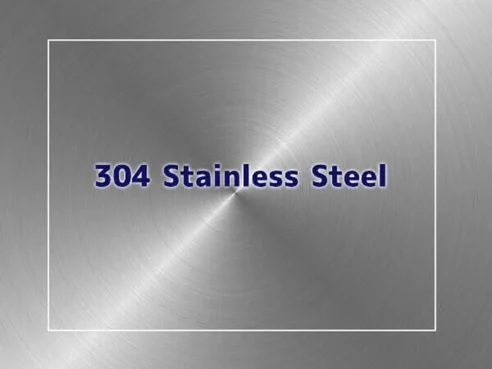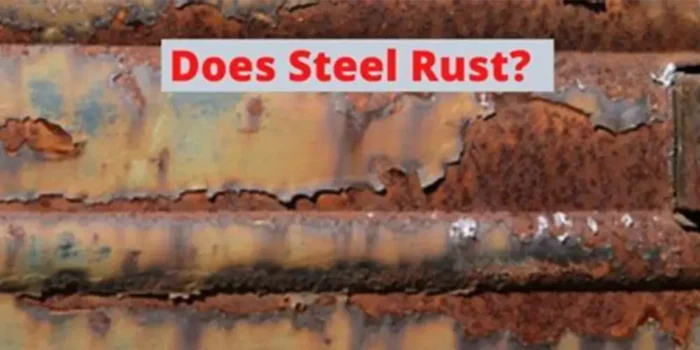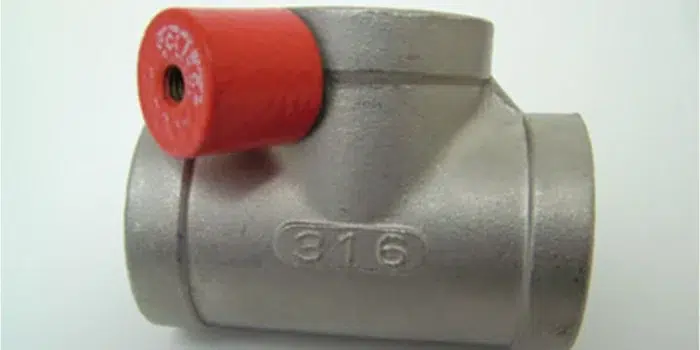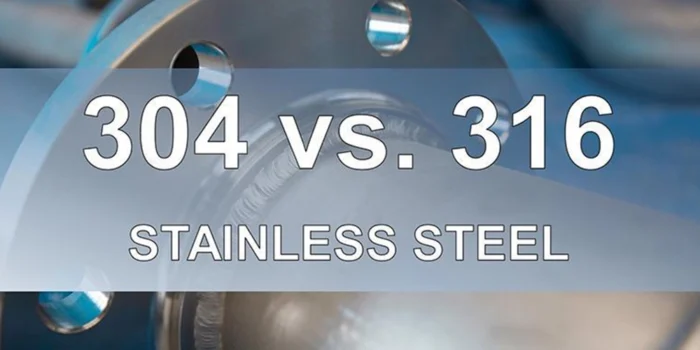Have you ever wondered if your stainless steel can rust? It’s a common question, especially when it comes to 304ステンレス鋼, one of the most popular grades used in various industries. In this blog, we’ll explore the truth behind 304ステンレス鋼 and its rust resistance.
304ステンレス鋼とは?
304ステンレス鋼, commonly referred to as AISI 304, is an austenitic stainless steel alloy recognized for its exceptional resistance to corrosion and oxidation, making it a popular choice in various industries, including construction, food processing, architecture, and medical applications. Primarily composed of a minimum of 18% chromium and 8% nickel, 304ステンレス鋼 forms a protective oxide layer that helps to prevent rusting and extends the material lifespan in many environments.
耐久性のための304鋼の評判にもかかわらず、 "ステンレス鋼 "は絶対にステンレス鋼ではありませんが、耐食性は普通の鋼よりも優れていることを指しますが、錆の実際の使用はまだ可能です。このような塩化物や高湿度への暴露などの特定の条件下で、それは腐食し、表面の錆を開発することができます。

なぜ304ステンレス鋼は錆びにくいのか?
304ステンレス鋼 contains chromium (≥ 18%) and nickel (≥ 8%). When exposed to oxygen, chromium forms a thin, invisible layer of chromium oxide on the surface. This “passive layer” acts as a shield, preventing oxygen and moisture from entering the iron layer below, which is the typical cause of rust. As long as this layer remains intact, 304ステンレス鋼 will not rust.
化学組成
| グレード | C | Si | ムン | P | S | ニー | Cr | モ |
| 304 | ≤0.08 | ≤1.0 | ≤2.0 | ≤0.045 | ≤0.03 | 8.0-11.0 | 18.0-20.0 | - |
クロムの存在は特に重要で、表面に不動態酸化層を形成し、さらなる酸化や腐食に対するバリアとなる。この不動態層は、損傷を受けても自己再生することができ、素材の寿命と耐久性に貢献している。
304ステンレス鋼は錆びるか?
耐久性のための304鋼の評判にもかかわらず、 "ステンレス鋼 "はステンレス鋼ではありませんが、耐食性を指しますが、通常の鋼よりも優れている、錆の実際の使用はまだ可能です。このような塩化物や高湿度への暴露などの特定の条件下では、それが腐食し、表面の錆を開発することができます。
The outstanding properties of 304ステンレス鋼 include its strength, formability, and ease of cleaning, which contribute to its widespread use. However, various forms of corrosion can compromise its integrity, including pitting corrosion, crevice corrosion, bimetallic corrosion, and stress corrosion cracking (SCC).
腐食の種類
1.孔食
Pitting is a form of localized corrosion that is particularly damaging to 304ステンレス鋼, especially in chloride-rich environments such as seawater. The passive chromium oxide layer that provides corrosion resistance can be compromised by chlorides, resulting in the formation of small pits on the steel surface.
ひとたび孔食が始まると、孔食は急速に進行し、金属の構造的完全性を脅かす。
2.隙間腐食
隙間腐食は、ガスケットの下や部品間の隙間など、酸素が制限された限られた空間で発生する。このような場所には塩化物が蓄積しやすく、保護不動態化層を破壊して腐食プロセスを加速させる。酸素欠乏と高濃度の塩化物の組み合わせにより、このような場所は特に腐食の影響を受けやすくなります。
3.バイメタル腐食
Bimetallic corrosion, also known as galvanic corrosion, is the corrosion of 304ステンレス鋼 that occurs when it comes into contact with another metal in the presence of an electrolyte, such as water. This interaction will form a primary cell, accelerating the corrosion of the less noble metal therein.
このリスクを軽減するため、異種金属が直接接触しないよう、適合する金属や絶縁材料を使用することが望ましい。
4.応力腐食割れ(SCC)
応力腐食割れ(SCC)は、機械的応力と腐食性環境(通常は塩化物を多く含む)が共存する場合に発生する深刻な腐食の一形態である。機械的応力が加わると、ピットは亀裂へと拡大し、最終的には材料の破壊につながる。予防策としては、機械的応力を軽減し、SCCの影響を受けにくい材料を選択することが挙げられる。
一般的な錆の原因
Although 304ステンレス鋼 is known for its corrosion resistance, it can still rust under certain conditions. Factors that can damage the passivation layer and lead to rusting include:
1.塩化物腐食
耐塩素イオン濃度は、80℃でわずか20.5ppmである。食塩、海水、汗などの塩素系環境にさらされると、塩化物イオンが不動態化膜を損傷し、局部腐食(孔食、粒界腐食など)、さらには錆やカビの汚れの原因となります。
例えば、海洋環境や塩化物を多く含む環境では、こうした環境の攻撃的な性質により、孔食や隙間腐食のリスクが著しく高まる。
2.環境要因
ステンレス鋼の発錆プロセスには、環境が重要な役割を果たす。高湿度、高塩分(沿岸部など)、強酸・強アルカリ(塩酸、硫酸など)、高温環境に長期間さらされると、腐食が加速される。
硫黄化合物などの工業汚染物質も、ステンレ ス鋼の表面に硫酸を生成し、腐食の原因となる。
3.機械的損傷
- 機械的な傷、へこみ、擦り傷、溶接、切断な どによって不動態化皮膜が損傷し、露出したステンレ ス母材は、湿潤/腐食環境で錆びやすくなる。溶接部は粒界腐食の影響を最も受けやす い。
- 表面に残留した汚染物質(油、セメント、酸性液体など)を時間内に除去しなかったり、長期的に水が蓄積して水垢を形成したりすると、錆の腐食を誘発する可能性がある。
4.材料の欠陥
Inferior 304ステンレス鋼 may have reduced corrosion resistance due to substandard alloy compositions (e.g., insufficient chromium/nickel), inadequate solution treatment, or intergranular corrosion tendencies.
304スチールの錆を防ぐ方法
Rust can form on the surface of 304ステンレス鋼 when exposed to oxygen and moisture, especially if contaminated with substances such as salt or chlorides. Regular cleaning and maintenance, with the use of specialized stainless steel cleaners, will help remove surface rust and prevent further corrosion.

予防措置
1.環境制御:
塩化物イオンへの暴露を避け(例:海水に近づけない、塩分や汗の汚れを速やかに乾かす)、環境を乾燥させる。
2.表面保護
機械的損傷を避けるため、定期的に表面を十分に洗浄し、乾燥させる。不動態化処理は溶接箇所で行う。
3.素材の選択
Coastal or industrial areas are recommended to use more corrosion-resistant 316ステンレス鋼, or ensure that the composition of 304ステンレス鋼 is up to standard.
4.定期メンテナンス
滞留水を避けるため、汚染物質(油、酸性液体)を適時に除去する。
5.不動態化処理
Passivation treatments can significantly enhance the corrosion resistance of 304ステンレス鋼. This process involves the application of citric or phosphoric acid blends to restore and reinforce the passive layer on the metal surface, which is vital for preventing oxidation and subsequent corrosion.
定期的な不動態化処理は、沿岸地域や腐食剤への曝露が多い工業用途など、ステンレス鋼が過酷な条件に直面する環境では特に有効です。
6.定期的な清掃
When cleaning 304ステンレス鋼, it is crucial to avoid harsh chemicals or abrasive materials, as these can damage the protective oxide layer that helps prevent corrosion.
石鹸と水を使うだけで、表面の手入れは十分である。
サビ処理
1.軽度のさび
シュウ酸、サビ取り専用ペースト、またはスチール用洗浄水で拭いた後、水ですすぎ、乾燥させる。
2.激しい腐食
表面の不動態化層を戻すには、研磨または電解処理が必要である。腐食が内部に深く浸透している場合は、部品の交換を推奨する。
定期的な検査を行って、変色、錆の斑点、孔食などの腐食の初期兆候を特定し、さらなる損傷を軽減するために速やかに対処すべきである。
結論
304ステンレス鋼 is highly resistant to rust,due to its chromium-rich composition. However, it can rust under extreme conditions or if not properly maintained.
素材の錆びによるコスト増を避けるため、使用環境に適したグレードのステンレスを選ぶことをお勧めします。
電化製品を錆びさせず、その輝きを保つために、こまめに洗浄し、十分に乾燥させ、予防措置を続けることをお勧めします。



